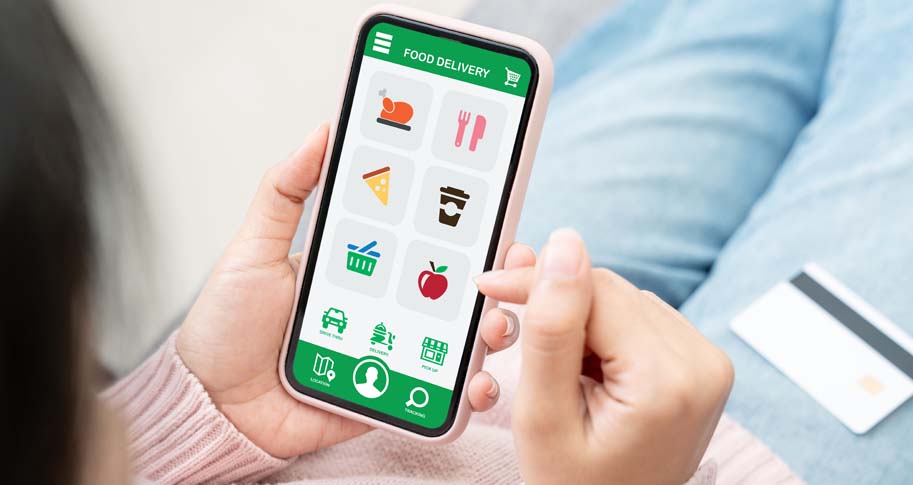
If you’re finding it difficult to locate common items at your local grocery store, you’re not alone. Across the country, retailers and shoppers alike are dealing with a new reality of shipping delays, less variety, and stockouts. Since the start of the pandemic, consumers’ habits have shifted dramatically, taking a toll on the supply chain.
Shifts in Consumer Behavior
The pandemic fundamentally changed the way consumers behave, starting with their wallets. As Covid-19 intensified, Americans opted to spend their money on necessities, like groceries and cleaning supplies, rather than apparel and restaurants. With more people buying groceries and staying home, cooking habits changed. Prior to the pandemic, 48% of average shoppers cooked food at home. During the pandemic, this number soared to 80%. Although consumers will eventually return to restaurants at pre-pandemic rates, cooking remains important and contributes to areas of growth for the CPG industry. For example, 46% of working Americans expect to continue working from home. As a result, food and beverage sales for breakfast and lunch products are likely to remain high. Pandemic-adopted behaviors, like we’re seeing with spending and cooking, have increased the demand for everyday items and impact the supply chain.
The delicate relationship between consumer behavior and the supply chain was most visible during the toilet paper shortage in early 2020. Although experts doubt there will be a repeat of the shortages seen then, demand for paper products is once again on the rise. Paper towels and toilet paper were only 86% in stock in August, far below the average rate of consumer goods products. Similarly, demand for cleaning products also increased. Back-to-school shopping and rising cases of Covid-19 are largely responsible for this.
Importantly, consumers’ perception of the economy may also be a factor in people flocking to stores. The Consumer Confidence Index, also known as the CCI, consists of 50 questions that assess consumers’ financial situation, economic conditions, and buying attitudes. In recent months, the CCI soared to the mid-80s. As consumer confidence increased, the economy and retail sales followed suit. By the end of Q2, both grew by 6.7% and 0.6%, respectively. However, the CCI’s most recent rating decreased significantly. As of August 2021, the CCI was 70.3 out of a 100 point scale, compared to 74.1 in August 2020. This is perhaps caused by the raging delta variant and rising inflation, up 5.4% from 2020. The dip in the CCI rating is an indication that consumers still lack certainty in this ever-changing, pandemic landscape, spilling over into how they shop.
Supply Chain Challenges
Despite increased demand for items, the supply chain faces many challenges. There is a shortage of shipping containers, causing shipping rates to soar. Manufacturing sites are at capacity, and ports are congested and causing delays. This is worsened by a shortage of truck drivers, who play a large role in preventing congestion at terminals. While trucking companies are offering higher wages, it will take time to fill positions.
In the meantime, freight is likely to sit at facilities for longer periods of time before it gets where it needs to go, leaving retailers struggling to get the full variety of products for their shelves. Shipping times are expected to double during the holiday season, and delivery times will increase without enough truck drivers.
“The supply chain breakdowns, backlogs and delays we're experiencing are the result of the lethal trifecta of demand surges, capacity shortages and, at times, regulatory restrictions,” said Christian Hofer, associate professor in the Department of Supply Chain Management at the Sam M. Walton College of Business.
Solving the Supply Chain Problems
To combat these problems, many companies are re-thinking their manufacturing operations. Companies like Gojo Industries, Clorox, and P&G increased capacity, added manufacturing sites, or hired third-party manufacturers to fulfill orders. Many retailers still experience shortages, which only get passed along to shoppers.
Unfortunately for consumers, the supply chain issues will complicate holiday shopping. With supply and shipping delays expected, consumers should buy sooner to get the items on their wishlist.
The pandemic demonstrates how susceptible our supply chain is to changes in consumer behavior.
“Supply chains were not built to cope with this onslaught of challenges the pandemic has brought on. The silver lining is that supply chain managers now generally have a much better understanding of what can go wrong and work feverishly to design more resilient supply chains,” Hofer said. “Once we get through this pandemic, this is something that we will all benefit from.”

 Laurel Schley
Laurel Schley 



